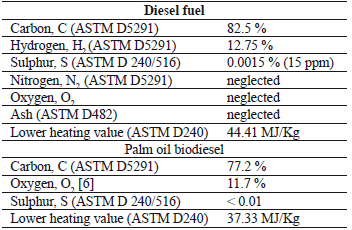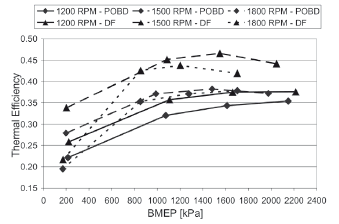Services on Demand
Journal
Article
Indicators
-
 Cited by SciELO
Cited by SciELO -
 Access statistics
Access statistics
Related links
-
 Cited by Google
Cited by Google -
 Similars in
SciELO
Similars in
SciELO -
 Similars in Google
Similars in Google
Share
DYNA
Print version ISSN 0012-7353On-line version ISSN 2346-2183
Dyna rev.fac.nac.minas vol.78 no.170 Medellín Dec. 2011
PERFORMANCE AND EMISSIONS OF A HEAVY DUTY DIESEL ENGINE FUELLED WITH PALM OIL BIODIESEL AND PREMIUM DIESEL
DESEMPEÑO Y EMISIONES DE UN MOTOR DIESEL PARA TRABAJO PESADO CUANDO ES OPERADO CON BIODIESEL DE PALMA AFRICANA Y DIESEL DE BAJO CONTENIDO DE AZUFRE
HELMER ACEVEDO Ph.D.
Profesor Asociado, Departamento de Ingeniería Mecánica y Mecatrónica, Universidad Nacional de Colombia, Campus Bogotá, hracevedog@unal.edu.co
JUAN MANTILLA Ph.D.
Profesor Asistente, Departamento de Ingeniería Mecánica y Mecatrónica, Universidad Nacional de Colombia, Campus Bogotá, jmmantillag@unal.edu.co
Received for review Abril 22th, 2010, accepted March 14th, 2011, final version April 25th, 2011
ABSTRACT: Biodiesels are promoted as alternative fuels due their potential to reduce dependency on fossil fuels and carbon emissions. Research has been addressed in order to study the emissions of light duty vehicles. However, the particle matter and gaseous emissions emitted from heavy-duty diesel engines fueled with palm-biodiesel and premium diesel fuel have seldom been addressed. The objective of this study was to explore the performance and emission levels of a Cummins 4-stroke, 9.5 liter, 6-cylinder diesel engine with common rail fuel injection, and a cooled exhaust gas recirculation (EGR). The palm-biodiesel lowered maximum engine output by much as 10 %. The engine emissions data is compared to standards from 2004, and is determined to pass all standards for diesel fuel, but does not meet emissions standards for PM or NOx for palm-biodiesel.
KEYWORDS: palm-biodiesel, alternative fuels, International Emission Standards, diesel engines
RESUMEN: Biodiesel es promocionado como combustible alternativo para sustituir combustibles de origen fósil y reducir emisiones de carbono. Algunos estudios han sido llevados a cabo para estudiar las emisiones de vehículos diesel de baja potencia. Sin embargo, las emisiones sólidas y gaseosas emitidas por vehículos de trabajo operados con biodiesel de palma africana y diesel de bajo contenido de azufre (~ 15 ppm) han sido poco estudiadas. El objetivo de este estudio fue determinar el desempeño y emisiones de un motor Diesel Cummins, 4 tiempos, 9.5 litros, 6 cilindros con sistema de inyección "common rail", y sistema de recirculación de gases. El motor desarrolló una menor potencia (10 %) cuando fue operado con biodiesel de palma africana. El motor cumplió con la norma ambiental 2004 cuando fue operado con combustible diesel, sin embargo, con biodiesel de palma africana las emisiones de material particulado y los óxidos de nitrógeno estuvieron fuera de norma.
PALABRAS CLAVE: bodiesel de aceite de palma africana, combustibles alternativos, Estándares Internacionales en Emisiones, motores diesel
1. INTRODUCTION
Diesel engines are the most efficient of all existing internal combustion engines, making them one of the major contenders as a power source in the 21st century.
One of the effects that is caused by diesel engines is the environmental impact. Diesel engines emit particulate matter (PM) and nitric oxides (NOx). The environmental impact issue has up to now been tackled via modifications of the engine mechanism, such as by using an intercooler turbocharger and cooled EGR. In addition to this countermeasure, use of a common-rail computerized high-pressure fuel injector enhances the controllability of fuel injection and the atomization of fuel spray.
Research on the utilization of alternative fuels in compression ignition (CI) engines has increased in recent years. This increase is driven largely by energy and environmental factors including the scarcity and economic swings of fossil fuels, and also the increasing CO2 emissions which are causing global climate change. An alternative fuel that has the potential of mitigating these issues is palm oil biodiesel (POB).
Biodiesel is a generic term that refers to various fatty-acid mono-esters that can be used for diesel fuel. It is made from the conversion of triglyceride (vegetable oil and animal fats) to esters (primarily methyl esters) via various esterification processes [13]. Biodiesel has physical properties very similar to those of conventional diesel fuel [14]; but it is renewable, nontoxic, and biodegradable [15]. Biodiesel is the only alternative fuel to have fully completed the health effects testing requirements of the Clean Air Act. It may be made from a variety of different vegetable oils or animal fats. For example, in Germany, rapeseed-oil-based biodiesel (RME) is the most abundant [11], whereas soy-based biodiesel (SME) is the most widely used biodiesel in the United States [16].
Biodiesel can be blended in any proportion with petroleum diesel fuel, and blended biodiesel, mainly in blends of 20 % (B20) or less, can be used in most conventional diesel engines with little or no modification. However, only a few manufacturers recommend operating their engines with blends higher than B5. It is likely that this value of blend ratio will increase as biodiesel fuel quality improves and appropriate additives are developed.
There are advantages and disadvantages to using biodiesel as compared to using petroleum-based diesel fuel. Advantages include biodiesel's greater cetane number than D2 (regular diesel fuel) [17], and the fact that biodiesel contains essentially no aromatics or sulfur. The absence of sulfur reduces corrosion and prevents sulfur poisoning of after-treatment systems. Biodiesel is oxygenated fuel with a high oxygen content, +11 % [17,14], which reduces elemental carbon emissions. There are also disadvantages to biodiesel fuel. It has a slightly lower fuel density than regular diesel fuel, so more fuel is required to achieve the same amount of power. Compared to regular diesel fuel, biodiesel also has higher viscosity, affecting spray formation; higher pour point and cloud points, limiting operation; lower oxidative stability, shortening storage life; and higher organic carbon emissions.
Emissions of total PM, CO, and HC are reduced by using biodiesel fuel [16,18], while those of particle-bound volatile organic material (organic carbon) are increased [19,20], and those of NOx are slightly higher [16,18]. However, recent work suggests that NOx emissions either increase or decrease slightly depending upon the vehicle and testing conditions [21]. Oxidation catalysts allow for effective control of organic carbon [17,22]. Various approaches to reduce NOx have been proposed, such as fuel additives [23], using water emulsions with exhaust gas recirculation (EGR) [24], using sensors to detect the presence of biodiesel and shift injection timing accordingly [25], and modifying oil composition to enhance methyl oleate content [26,27]. Other environmental effects resulting from the use of biodiesel as a fuel include a slight increase of ozone precursors [18], but a reduction in elemental carbon, a global warming agent.
In general, it is reported that biodiesel has a less adverse effect on human health than petroleum-based diesel fuel. Schroder et al. [15] and Krahl et al. [17] reported that mutagenicity of biodiesel particulate emissions is much lower than that of petroleum-based fuel. Finch et al. [27], in their study of rats exposed to biodiesel emissions, showed only modest health effects at the highest exposure level. Even these effects were described as "no-observed-adverse-effect" within the uncertainties of their study.
The focus of this work is to investigate the effect of a CI engine on exhaust emissions when the engine is fuelled with POB and compared to those for ultra low sulphur diesel (ULSD) without modifications of any engine parameter. Basically, the results of this research show what would happen to unconverted engines with the use of POB.
2. EXPERIMENTAL SETUP
2.1 Diesel Engine and Instrumentation
For this study, a 2005 Cummins 6 cylinders 9.5 L diesel engine was tested. This model has a rated speed of 1800 RPM with an approximated rating of 378 HP (286 kW). The torque peak speed is 1200 RPM and 1350 lbf-ft (1830 N-m) torque. It has a high-pressure common rail fuel injection, cooled EGR and variable geometry turbo charging to meet the 2004 EPA on-road highway standards.
In this study, temperature readings were recorded at several locations on the engine with an Omega type K thermocouple with an uncertainty of ± 0.1 °C and a range of 0-527 °C. The dynamometer, a Siemens DC electric dynamometer, which applied the load to the engine, was equipped with a load sensor in order to measure the torque, and the fuel flow was measured by the Terter volumetric flow system with the uncertainty of (± 0.5 cm3/sec). Airflow was measured using a Merriam laminar flow element (± 0.1 SCFM). All these measurement devices were connected to a National Instruments data logger coupled with a PC.
A Horiba micro soot sensor (photo acoustic soot sensor, PASS) was used to measure soot concentration in diluted exhaust from the Cummins diesel engine. The measuring range and the detection limit of the Horiba are 0-50 mg/m3 and < 10 mg/ m3, respectively. The mass fractions of different chemical components in the exhaust gases were measured by a Horiba gas analyzer. The emission bench was conformed of an O2 gas analyzer (± 0.1 %), a CO2 gas analyzer (± 0.05 %), a CO gas analyzer (± 0.01 %), an NOx gas analyzer (± 1 % full scale), JUM engineering heated FID analyzer (± 10ppm), and a Beckman industrial flame ionization detector (± 1PPM).
2.2 Fuels
Two different fuels were used in this study. A premium diesel fuel with a lower sulphur content and palm oil biodiesel were tested in the Cummins diesel engine. The specifications of both fuels are shown in Table 1.
2.3 Procedure
The procedure for the experiment was starting the engine and allowing for it to warm up for 15 minutes. The three engine speeds tested in this study were 1200 RPM, 1500 RPM, and 1800 RPM. Next the engine speed was set to 1800 RPMs and the load on the engine was slowly increased until the engine reached its maximum load. The exhaust temperature was monitored in order to determine when the engine was stable. Then load was decreased to 75, 50, 25, 10 and 0 %, respectively. The whole procedure was then repeated for both 1500 and 1200 RPMs. Following the second set of data collection, the engine speed was again set to 1800 RPMs, and the load set to zero. The system was allowed to stabilize and data was collected. Lastly, the engine speed was set to 1500 and 1200 RPMs and data was collected. For both fuels tested, the procedure was the same.
3. RESULTS AND DISCUSSION
Results are presented by brake power and torque, temperatures, pressures, dry emissions, black carbon, fuel consumption, air intake, and efficiencies.
3.1 Engine Performance
The variations of brake engine power and torque values in relation with the fuel types are shown in Fig. 1 and Fig. 2, respectively. The maximum brake power and torque with diesel fuel operation were 282.5 kW at 1800 rpm, and 1828.70 N-m at 1200 rpm. For ease of comparison, this power and torque assumed 100 % as the reference. The observed maximum brake power and torque values of the palm oil biodiesel were also found at 1800 and 1200 rpm, but less than the diesel fuel value. The peak power and torque were 267.5 kW (-5.3 %) and 1780 N-m (-3.02), respectively. These results may be due to the higher viscosity and lower heating values of palm oil biodiesel.
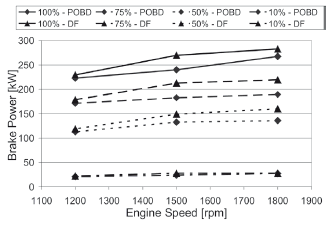
Figure 1. Brake power of diesel fuel and palm biodiesel
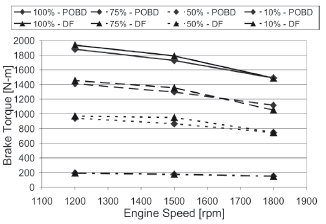
Figure 2. Brake torque of diesel fuel and palm biodiesel
Specific fuel consumption is one of the important parameters of an engine and is defined as the consumption per unit of power in a unit of time. Test results showed that the obtained minimum specific fuel consumption values were in the vicinity of the maximum power area.
As shown in Fig. 3, the minimum specific fuel consumption values were 0.18 kg/kWh with diesel fuel at 1800 rpm, and 0.22 kg/kWh with palm oil biodiesel at 1800 rpm. The higher specific fuel consumption values in the case of palm oil methyl ester (+22.2 %) are due to their lower energy content. In order to maintain the same brake power output, the BSFC of palm-biodiesel blends would be increased to compensate for the reduced chemical energy in the fuel.
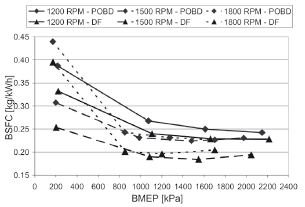
Figure 3. Brake specific fuel consumption of diesel fuel and palm oil biodiesel
The variation of brake thermal efficiency with respect to load for different fuels considered for the present analysis is presented in Fig. 4. For all tested conditions, brake thermal efficiency has the tendency to increase with and increase in the load applied. This is due to the reduction in heat loss and increase in power developed with increase in load. The maximum brake thermal efficiencies obtained were 47 % for diesel fuel and 38 % for palm oil biodiesel. This lower brake thermal efficiency obtained for B100 (-19.2 %) could be due to the reduction in calorific value and increase in fuel consumption, as compared to diesel fuel. This agrees with the increase of BSFC for POB (+22.2 %).
3.2 Engine Emissions
3.2.1 CO and HC emissions
The emission characteristics of biodiesel are of special interest in relation to meeting the environmental norms. Regarding CO and HC exhaust, the results are presented in Fig. 5 and Fig. 6, respectively. The fuels are producing low amount of carbon monoxide emissions at higher loads, except for 1800 rpm which emits a relatively higher CO at the maximum load tested compared to a medium load.
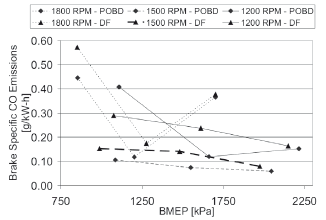
Figure 5. CO emissions of diesel fuel and biodiesel with respect to load
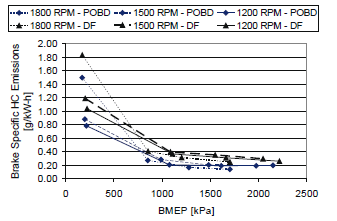
Figure 6. Hydrocarbon emissions for both fuels tested at different conditions
It is interesting to note that the engine emits more CO and HC using diesel compared to biodiesel under all loading conditions. The CO and HC reduction of biodiesel may be due to the intrinsic oxygen contained by the methyl esters [3] and [28]. It is believed that the addition or use of biodiesel leads a significant HC emission reduction [5]. However, the level of the HC exhaust emissions for biodiesel was unexpected, at least under the present test conditions, and suggests the lower volatility of the saturated palm biodiesel may lead to incomplete vaporization and combustion of the fuel [6], thereby keeping HC emissions relatively high. In general, the 2004 American standard EPA is met for CO and HC emissions. The 2004 standard establishes that the maximum CO and HC emissions should be 20.8 and 0.67 g/kWh, respectively. It is evident that regardless of the fuel or load, this 2004 standard is always met. However, this is not the case for the 2007 and 2010 American EPA standard which establish a maximum of 0.19 g/kWh for HC. Neither ultra low sulphur diesel nor palm biodiesel will meet with this standard under these conditions.
3.2.2 Nitric Oxides
Figure 7 shows NOx emissions for both fuels tested at the three different engine speeds and all load conditions. As expected, B100 causes NOx emissions to increase 15 % compared to ULSD. The magnitude of the biodiesel NOx increase agrees well with previous studies [4,5,6].
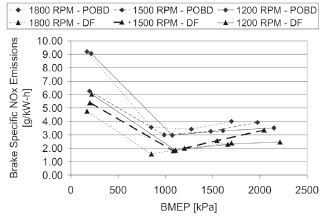
Figure 7. NOx emissions for ULSD and POBD
In direct injection diesel engines there is a well documented increase in NOx emissions of 2-4 % for "B20" blends and as much as 20 % for B100 [7]. Generally, NOx is closely related to the rate of heat release during engine operation. Consequently, the NOx emissions of biodiesel are higher than that of diesel, because the heat release rate of biodiesel is higher [2]. Nitric oxides emissions are insensitive to the maximum cylinder temperature, but are sensitive to the timing. The ignition delay is influenced by the fuel's ignition quality (defined by the cetane number), the compression ratio, engine speed, cylinder gas pressure, the intake-air temperature, and the quality of fuel atomization. The most important factor in the engine-out NOx emissions is an advance in the start of injection timing caused by the higher bulk modulus of compressibility of biodiesel fuel [1]. In this test, the injection timing was not modified intentionally because we wanted to show how the implementation of palm oil biodiesel on heavy duty diesel engines is not straight forward. However, several researchers [1] have reported how a change in the injection timing could decrease undesirable NOx emissions caused by the use of partial saturated palm oil biodiesel.
3.2.3 Particle Matter
Brake specific black carbon (BSBC) is plotted versus BMEP and can be seen in Fig. 8. The BSBC is a measure of the particle matter that is emitted in the exhaust gas.
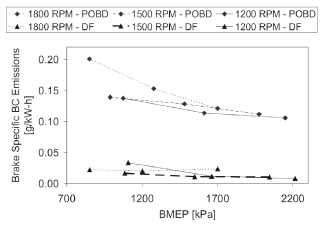
Figure 8. Black Carbon Emissions for ULSD and POBD
The mass collected on the Horiba micro soot sensor shows the particle emission increases with the use of palm oil biodiesel. This is due to high fraction of biodiesel would cause incomplete combustion [8,9]. In addition, this is caused through reduced atomizing of the fuel in the cylinder, which creates a less than optimal combustion. This leads to partially burnt particles and unburned residues being found in the exhaust. However, some authors have reported a significant reduction in PM emissions with the use of biodiesels. For example, in [12] PM emissions were collected on filters and B100 produced reductions with the use of biodiesel from soybean oil. In [12] the characteristics of the filters used are not specified. However there are filters which filter particles greater than 2.5 or 10 mm. It seems the PM emissions reported in [12] refer to particles greater than 10 mm. Lin et al. [10] showed that palm oil biodiesel blends have higher PM emission for a specific particle size (between 0.056 and 0.18 mm). On the other hand, for particle sizes greater than 0.18 mm, POBD blends have lower PM emissions. Although this research did not study the particle size distribution of the exhaust gases from a heavy duty diesel engine, it should be noticed that the Horiba micro soot sensor is a suitable instrument for measuring particle sizes smaller than 0.30 mm (nanoparticles).
4. CONCLUSIONS
Based on this study and the limited information available, it is not possible to draw definite conclusions concerning POBD influence on heavy duty diesel engine emissions. The information available provides the following picture:
Optimizing the engine management systems ensures that the increased NOx emissions remain limited and around the same levels as those for diesel.
If the vehicle is converted and/or setup correctly for running with POBD, emissions of CO, hydrocarbons, and PM10 will probably be lower than when the same vehicle runs on diesel.
FURTHER WORK
Authors are conducting experiments in order to get particle-size distribution from HD diesel engines fuelled with ultra low sulphur diesel and palm oil biodiesel blended in different proportions.
REFERENCES
[1] Szybista, J., Boehmana, A., Taylorb, J, and Mccormickb, R., Evaluation of formulation strategies to eliminate the biodiesel NOx effect. Fuel Processing Technology 86, pp. 1109- 1126, 2005. [ Links ]
[2] Kyu, H., Gu, H, and Sik, L., Spray and Combustion Characteristics of Biodiesel/Diesel Blended Fuel in a Direct Injection Common Rail Diesel Engine. Journal of Engineering for Gas Turbines and Power 30, 2008. [ Links ]
[3] Sureshkumar K, Velraj R, and Ganesan R., Performance and exhaust emission characteristics of a CI engine fueled with Pongamia pinnata methyl ester (PPME) and its blends with diesel. Renew Energy 33, pp. 2294-2302, 2008. [ Links ]
[4] Graboski, MS., Mccormick, RL., Alleman, TL., Herring, AM., The effect of biodiesel composition on engine emissions from a DDC series 60 diesel engine. National Renewable Energy Laboratory (Report No: NREL/SR-510-31461), 2003. [ Links ]
[5] Mccormick. R.L., Tennant, C.J., Hayes, R., Black, S., Ireland, J., Mcdaniel T., Williams, A., Frailey, M., Regulated Emissions from Biodiesel Tested in Heavy-Duty Engines Meeting Emission Standards. SAE paper No 2005-01-2200. 2004 [ Links ]
[6] Karavalakis, G., Stournas, S., Bakeas, E., Light vehicle regulated and unregulated emissions from different biodiesels. Science of the Total Environment 407, pp. 3338-3346, 2009. [ Links ]
[7] Graboski, M.S. and Mccormick, R.L., Combustion of fat and vegetable oil derived fuels in diesel engines, Progress in Energy Combustion Science 24, pp. 125- 164, 1998. [ Links ]
[8] Lin, Y.C., Lee, W.J, and Hou, H.C., Pah emissions and energy efficiency of palm-biodiesel blends fueled on diesel generator. Atmospheric Environment 40, pp. 3930-3940, 2006. [ Links ]
[9] Lin, Y.C., Lee, W.J., Wu, T.S. and Wang, C.T., Comparison of PAH and regulated harmful matter emissions from biodiesel blends and paraffinic fuel blends on engine accumulated mileage test. Fuel 85, pp. 2516-2523, 2005. [ Links ]
[10] Yuan-Chung L., Cheng-Hsien T., Chi-Ru Y., C.H. J.W., Tzi-Yi W., Guo-Ping Ch-Ch., Effects on aerosol size distribution of polycyclic aromatic hydrocarbons from the heavy-duty diesel generator fueled with feedstock palm-biodiesel blends. Atmospheric Environment 42, pp. 6679-6688, 2008. [ Links ]
[11] Monyem, A., Van Gerpen, J. H., The effect of biodiesel oxidation on engine performance and emissions. Biomass Bioenergy 20, pp. 317-325, 2001. [ Links ]
[12] Robert, L., Mccormick, C., Tennant, R., Robert, H., Stuart B., Ireland, J., Mcdaniel, T., Williams, A., Frailey, M., Christopher A., Regulated Emissions from Biodiesel Tested in Heavy-Duty Engines Meeting 2004 Emission Standards. SAE Technical Paper 2005-01-2200. [ Links ]
[13] Graboski, M. S., Mccormick, R. L., Combustion of fat and vegetable oil derived fuels in diesel engines. Progress Energy Combustion Science 24, pp. 125-164, 1998. [ Links ]
[14] Babu, A. K., Devaradjane, G. Vegetable oils and their derivatives as fuels for CI engines: An overview. SAE Technical Paper 2003-2001-0767, 2003. [ Links ]
[15] Schroder, O., Krahl, J., Munack, A., Bunger, J., Environmental and health effects caused by the use of biodiesel. SAE Technical Paper 1999-1901-3561, 1999. [ Links ]
[16] Bagley, S. T., Gratz, L. D., Johnson, J. H. and Mcdonald, J. F., Effects of an oxidation catalytic converter and a biodiesel fuel on the chemical, mutagenic, and particle size characteristics of emissions from a Diesel engine. Environmental Science Technology 32, pp. 1183-1191, 1998. [ Links ]
[17] Krahl, J.; Munack, A.; Schroder, O.; Stein, H. and Bunger, J., Influence of biodiesel and different designed diesel fuels on the exhaust gas emissions and health effects. SAE Technical Paper 2003-2001-3199. [ Links ]
[18] Mcdonald, J. F., Purcell, D. L., Mcclure, B. T. and Kittelson, D. B., Emissions characteristics of soy methyl ester fuels in an IDI compression ignition engine. SAE Technical Paper 950400. [ Links ]
[19] Purcell, D. L., Mcclure, B. T., Mcdonald, J. F. and Basu, H. N., Transient testing of soy methyl ester fuels in an indirect injection, compression ignition engine. Journal of American Oil Chemistry Society 73, pp 381-398, 1996. [ Links ]
[20] Mccormick, R. L., Effects of biodiesel on NOx emissions; Presented at California Air Resources Board; U.S. Department of Energy, National Renewable Energy Laboratory: Golden, CO; http://www.nrel.gov/vehiclesandfuels/npbf/pdfs/38296.pdf, 2005. [ Links ]
[21] Bouche, T., Hinz, M., Pittermann, R. and Herrmann, M., Optimising tractor C1 engines for biodiesel operation. SAE Special Publication No. SP-1545, pp. 57-64, 2005. [ Links ]
[22] Mccormick, R. L., Alvarez, J. R., Graboski, M. S., Tyson, K. S. and Vertin, K., Fuel additive and blending approaches to reducing NOx emissions from biodiesel.. SAE Technical Paper 2002-2001-1658, 2002. [ Links ]
[23] Yoshimoto, Y. and Tamaki, H., Reduction of NOx and smoke emissions in a diesel engine fueled by biodiesel emulsion combined with EGR. SAE Special Publication No SP-1608, pp. 225-233, 2005. [ Links ]
[24] Tat, M. E. and Van Gerpen, J. H., Biodiesel blend detection with a fuel composition sensor. Applied. Engineering Agriculture 19, pp. 125-131, 2003. [ Links ]
[25] Szybist, J. P., Boehman, A. L., Taylor, J. D. and Mccormick, R. L., Evaluation of formulation strategies to eliminate the biodiesel NOx effect. Fuel Processes. Technology 86, pp. 1109-1126, 2005. [ Links ]
[26] Kinney, A. J. and Clemente, T. E., Modifying soybean oil for enhanced performance in biodiesel blends. Fuel Processes. Technology 86, pp. 1137-1147, 2005. [ Links ]
[27] FInch, G. L., et al., Effects of subchronic inhalation exposure of rats to emissions from a diesel engine burning soybean oil-derived biodiesel fuel. Inhalation Toxicology 14, pp. 1017-1048, 2002. [ Links ]
[28] Benavides, A. y Benjumea, P. El biodiesel de aceite de higuerilla como combustible alternativo para motores diesel. Dyna 74 No 153, 2007. [ Links ]













